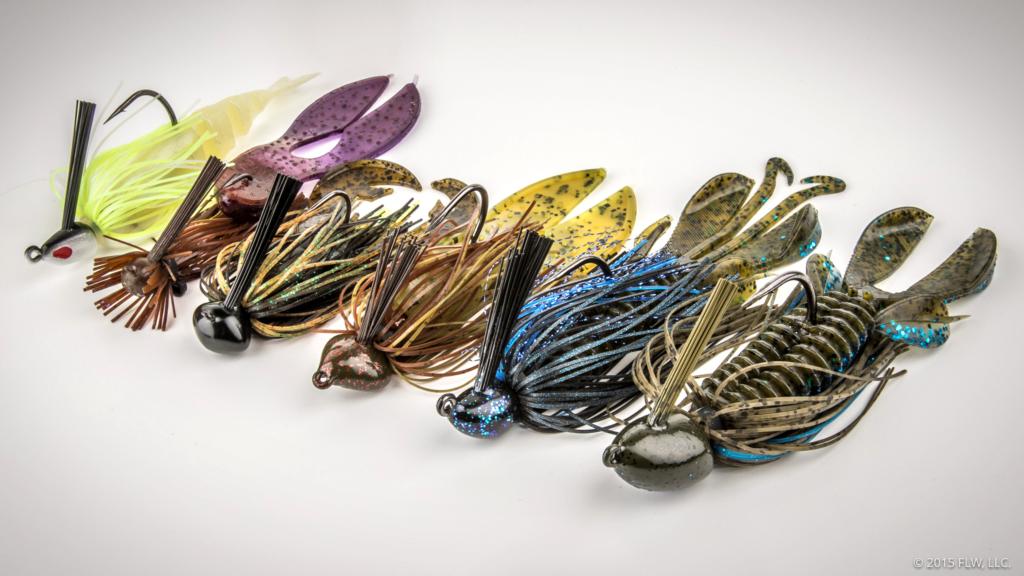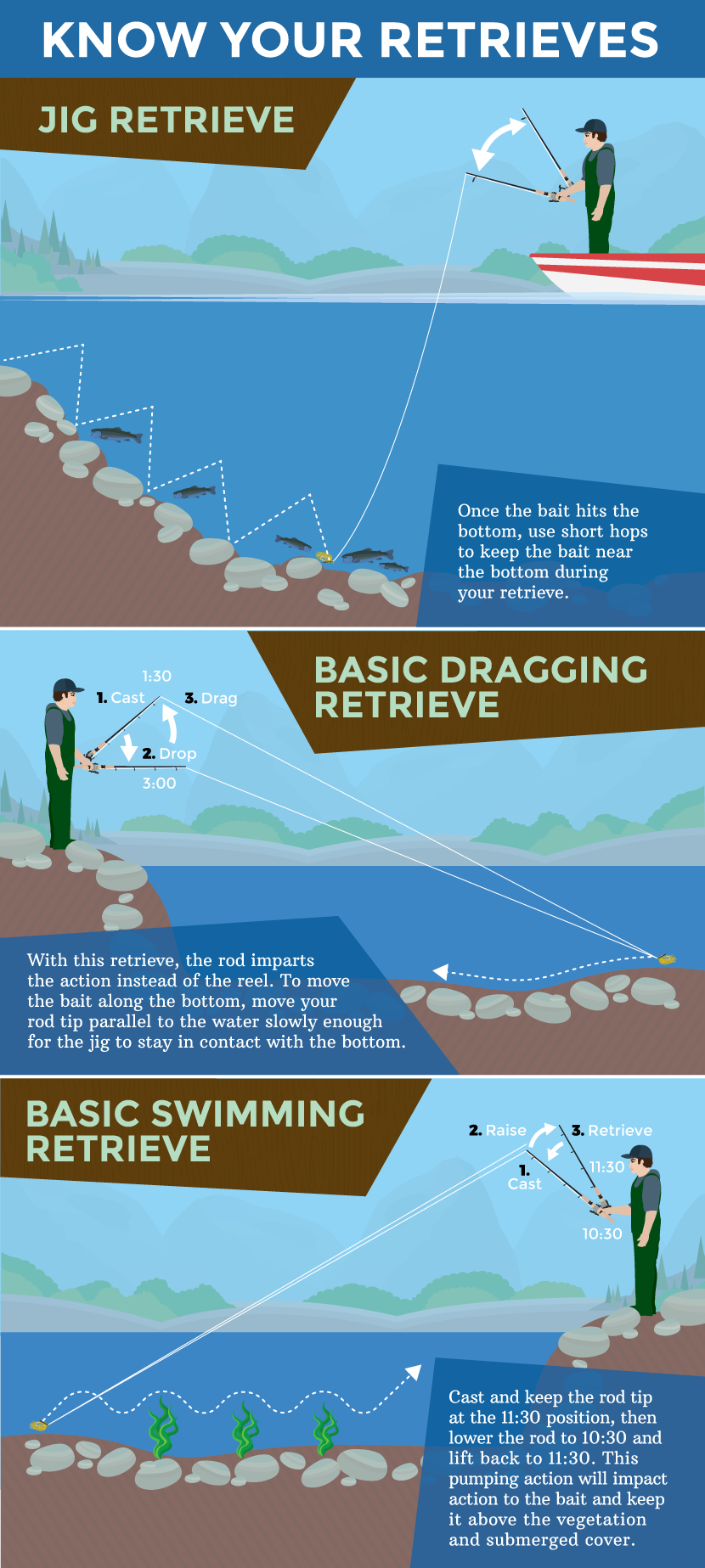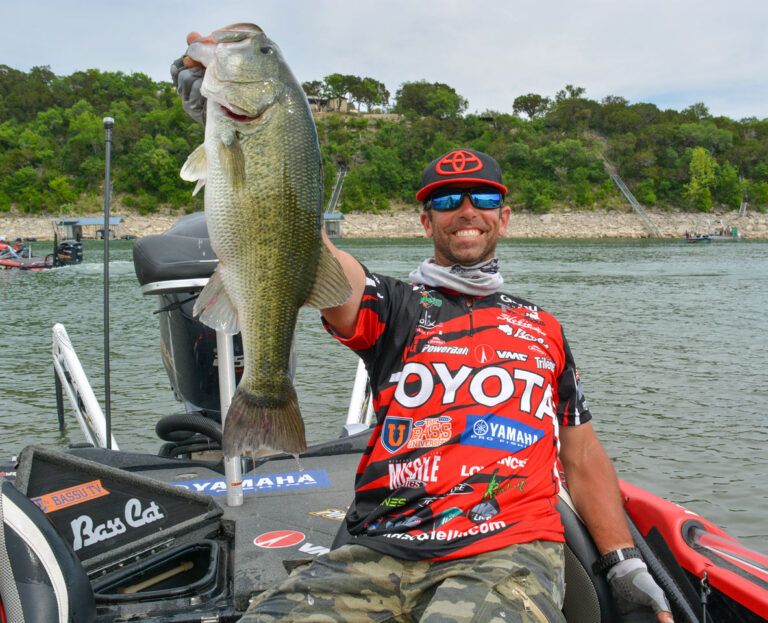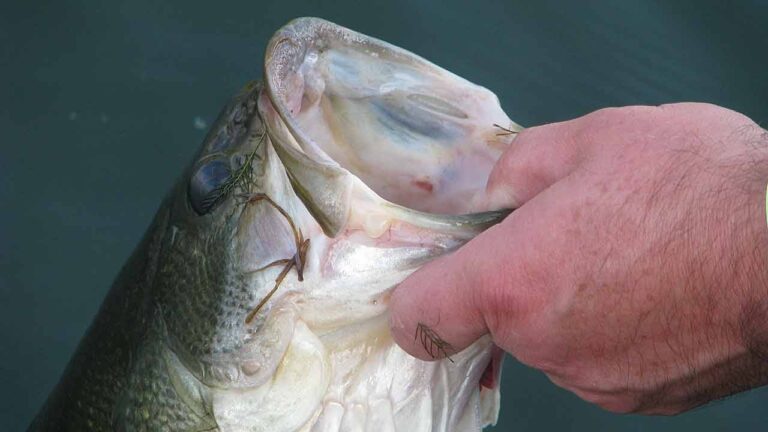How to Fish a Bass Jig
To fish a bass jig, select the right jig type and weight for your conditions, and retrieve it with varied, rhythmic action. Cast near structures where bass lurk and use short, sharp jerks to mimic prey.
Mastering the art of fishing a bass jig can significantly up your angling game, striking the attention of those elusive, monster bass. Often regarded as one of the most versatile lures, bass jigs come in various shapes and sizes, each designed for different environments—from rocky bottoms to weedy flats.
An essential tool in any angler’s toolkit, the bass jig is known for its ability to mimic a variety of bass prey, such as crawfish and other smaller fish, making it irresistible to the target species. By employing the correct retrieval techniques and paying attention to the details of your surroundings, you can exploit the predatory instincts of bass to your advantage. Whether you’re a seasoned professional or a weekend hobbyist, understanding how to effectively use bass jigs can lead to more fulfilling and successful fishing expeditions.
The Art Of Jig Fishing
Mastering jig fishing demands selecting the optimal jig for your conditions. Different waters and weather change what works best. Consider water clarity, depth, and the type of cover when picking a jig. Structure-specific jigs ensure better performance. Cast along weed lines or docks for effective results.
Good jigging starts with the right gear. A medium-heavy rod paired with a strong reel sets you up for success. Use a braided line for clearer water. A fluorocarbon line is better for murky conditions. Ensure your tackle box has various jig heads and trailers. This diversity helps adapt to any fishing scenario. Always remember, sharp hooks are vital!

Credit: majorleaguefishing.com
Location, Location, Location
Finding the right spot to catch bass is key. Bass fish love places with lots of plants. They hide and hunt in these green underwater forests. Look for spots where sunken trees rest. Bass often swim around these natural hiding spots.
Checking the water’s clarity is super important. Bass can see well in clear water, so they easily spot jigs. But, if the water’s murky, go for bright or noisy jigs to grab their attention. Always keep an eye out for ripples or waves. They can tell you where fish are swimming. Remember, quiet waters may hold more bass, so approach silently.
Timing Your Adventure
Bass jig fishing thrives in specific seasons. The best seasons align with bass behavior. Spring to fall marks optimal fishing. Bass become more active in these months. They’re looking for food to prepare for spawning or winter.
Early morning and late afternoon see bass biting most. Aim for these times for a successful trip. Sunset can also be productive. Bass feed during these periods, making it the perfect time to cast a jig. Keep an eye on weather patterns too. Bass tend to bite more before a storm.

Credit: www.fix.com
Mastering The Technique
Fishing a bass jig requires learning the proper jigging motion. This style involves quick upward motions of the rod followed by a pause. During the pause, the jig sinks, mimicking an injured prey. For beginners, mastering a steady rhythm is key.
Different retrieval methods can enhance effectiveness. Short, sharp jerks called the ‘snap jigging’ are ideal for active fish. A slower, drag-and-pause technique, known as the ‘dead-sticking’, works best when fish are inactive.
| Method | Motion | Best Used |
|---|---|---|
| Snap Jigging | Short, sharp jerks | Active fish |
| Dead-sticking | Slow drag and pause | Inactive fish |
Luring Them In
Choosing the best bait is crucial for catching bass with a jig. Start by understanding bass habits and what they like to eat. Use colors and sizes that mimic natural prey in the current environment. Silicone skirts and chunk trailers in greens, browns, or shads are effective.
Presenting the bait is an art that requires practice. Cast beyond the target and let the jig sink. Twitch your rod tip to make the jig hop along the bottom. It looks like a scuttling creature, irresistible to bass. Always keep a tight line to feel the bite and set the hook quickly.

Credit: www.onthewater.com
Common Mistakes To Avoid
Bass fishing with a jig can be simple. A common mistake is making it too complex. Keep your technique easy and straightforward. Another pitfall is not watching nature’s cues. The weather and water conditions affect fish behavior. They tell you where to find bass.
- Use a basic retrieve until it stops working.
- Look for signs like jumping fish or birds feeding.
- Change spots if you don’t get bites.
- Keep an eye on the water temperature and clarity.
Frequently Asked Questions On How To Fish A Bass Jig
How Do You Jig Fish For Beginners?
Choose a suitable jig and rod combo for the fish species you’re targeting. Cast your line and let the jig sink to the desired depth. Use short, varying twitches of the rod tip to mimic live prey. Be attentive to bites and swiftly set the hook once you feel a nibble.
When Should I Use A Bass Jig?
Use a bass jig when targeting structure, during pre-spawn and spawn periods, in muddy water conditions, or when fishing through dense cover. They excel in year-round versatility.
What Color Jigs Are Best For Bass Fishing?
Black, blue, and green pumpkin jigs excel for bass fishing in clear water. Chartreuse and white perform well in stained or murky conditions. Choose colors that mimic natural prey in the fishing environment.
Do You Put Bait On A Jig?
Yes, adding bait to a jig can enhance its effectiveness, as it adds scent and flavor that attract fish.
Conclusion
Mastering the art of bass jig fishing unlocks a new level of angling satisfaction. With the tips shared in this post, your tackle box is now equipped for success. Patience, practice, and persistence are your allies on the water. Cast with confidence, and watch as these tactics transform your bass fishing adventures.
Tight lines to you!





